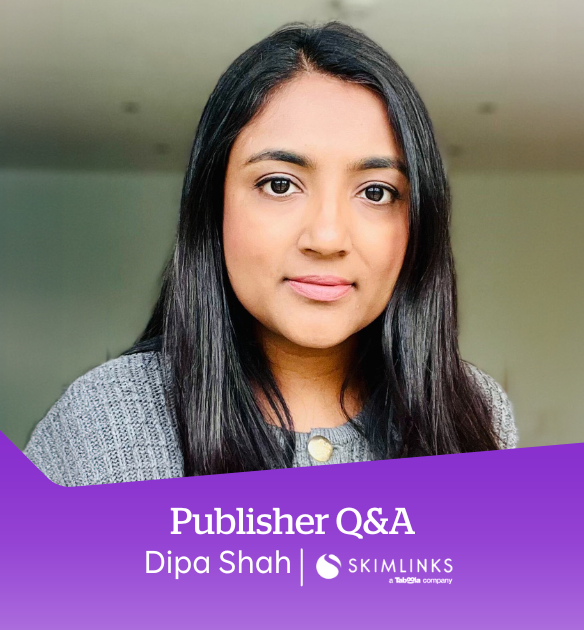Benefits of Affiliate Marketing
Affiliate marketing is one of the oldest forms of advertising, however, uncertainty of the past few years has led more brands to utilise affiliate to reach consumers, support retention and create brand loyalty. Here we explore how affiliate marketing has evolved and the benefits it brings to brands and publishers.

Affiliate marketing is one of the oldest forms of advertising, yet brands are only just beginning to recognise the channel’s true value. The uncertainty of the past few years has led more brands to utilise affiliate to reach consumers, support retention and create brand loyalty. But many brands still have questions about the channel and the value it drives for businesses.
Before we delve into the benefits, let’s first take a minute to explain the basics. Affiliate marketing is a performance-based channel where brands (advertisers) partner with publishers, who promote the brand to their audience. When a consumer clicks on a link shown by a publisher, they’re directed through to the brands site, make a purchase, and the publisher partner responsible for driving the sale gets a commission for their referral.
One of the best things about affiliate is that it’s low-risk and low-cost. Brands only pay publishers when a sale occurs, making the channel largely cost-effective and risk-free. The channel is also flexible and continues to evolve in ways that traditional marketing channels are unable to.
Here we explore how affiliate marketing has evolved and the benefits it brings to brands and publishers.
Benefits for Brands
Low costs and outstanding ROI are only part of the story with affiliate. It’s the only marketing channel that directly ties advertiser spend to the results it drives. Dynamic Commissioning technology gives brands the ability to offer different commission rates based on customer types, products or categories (alongside many other data points). Brands get full cost control and can compensate publishers based on the value of the customers they drive.
For example, affiliate marketing is ideal for brands focused on customer acquisition. Dynamic Commissioning empowers brands to motivate publishers to drive new customers by offering a higher commission rate for this consumer type. Rakuten Advertising data reveals that customers who visit a brand’s site via affiliate publishers are 11% more likely to make repeat purchases.
Additionally, independent research shows existing customers referred via the channel are 21% more likely to make repeat purchases. That means affiliate is great for driving incremental sales for both new and existing customers.
Benefits for Publishers
Recent events have seen more people turn to online content than ever before. And along with spending more time perusing the internet, consumers have become more price-conscious and savvy with their buying habits. These changes, and the fact that more brands are increasing channel investment, mean publishers have many new opportunities to drive growth.
Publishers who are not monetising their sites and leveraging high-quality audience data sets via affiliate are missing a core revenue stream. Affiliate networks make it easy for publishers to access new revenue streams and can use CRM data brands provide to reach and engage valuable audience segments.
Multi-touch Commissioning has also opened the affiliate space to content publishers. Historically, affiliate marketing has rewarded only the publisher that drives the last click to a brand before the customer makes a purchase. Multi-touch commissioning rewards all publishers within the path to purchase for the role they play in driving conversions. Whether it be during the discovery phase or the last-touch before a sale, publishers are credited. Because of this outstanding new business opportunity, many of the world’s largest media houses now offer content commerce as a new approach to revenue growth and brand collaboration.
Affiliate Advancements
Commissioning technologies haven’t been the only advancement in the affiliate industry. Innovative publishers are accelerating the change of pace. Over recent years we’ve seen publishers emerge that specialise in visual search, voice vouchers and bridging the online-to-offline gap. Additionally, automation and AI-powered tools from networks drive efficiency and additional revenue streams.
For example, AI-powered publisher Matchmaking tools employ performance data from affiliate networks to provide publishers and brands with real-time partner recommendations. For publishers, this means more visibility into a broader range of brands, all while discovering new partners who value the publishers’ audience. And for brands, AI-powered matchmaking tools give publisher recommendations based on past performance history with other brands.
Affiliate now offers powerful personalisation options for brands and publishers. the tools exist that allow brands and publishers to deliver the right message to the right consumer at the right time. By accessing unique insights from consumer browsing and shopping data, publishers can serve individually targeted messages and promotional offers to their audiences, all within data privacy and regulation parameters.
There is no denying the effectiveness of affiliate as a core channel within the marketing mix. And though more brands are investing in affiliate marketing, they are also scrutinising performance and ROI. Understanding the benefits and technologies that affiliate provides to both brands and their publisher partners is the first step in truly understanding the value the channel brings.
Find out how your businesses can drive value through the affiliate channel. Contact us here to speak to an expert.


